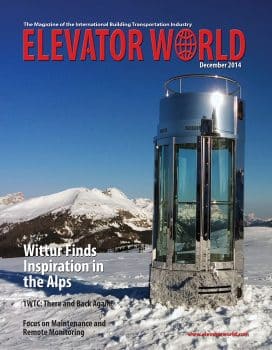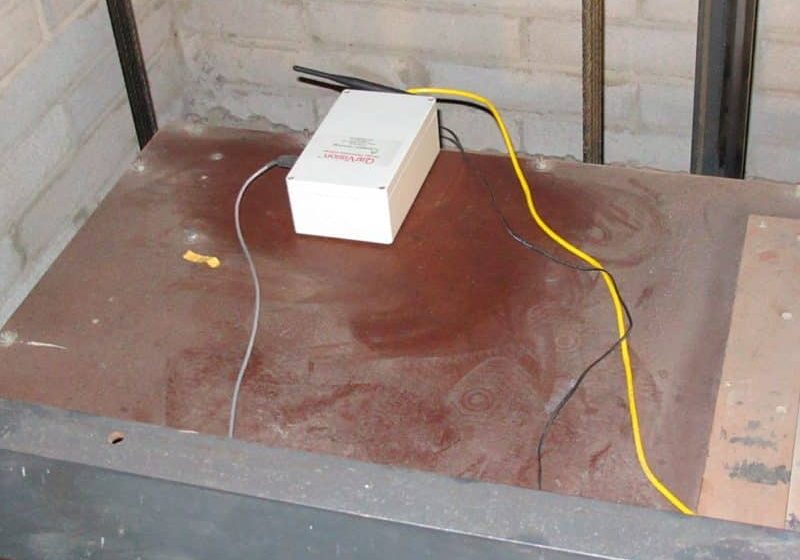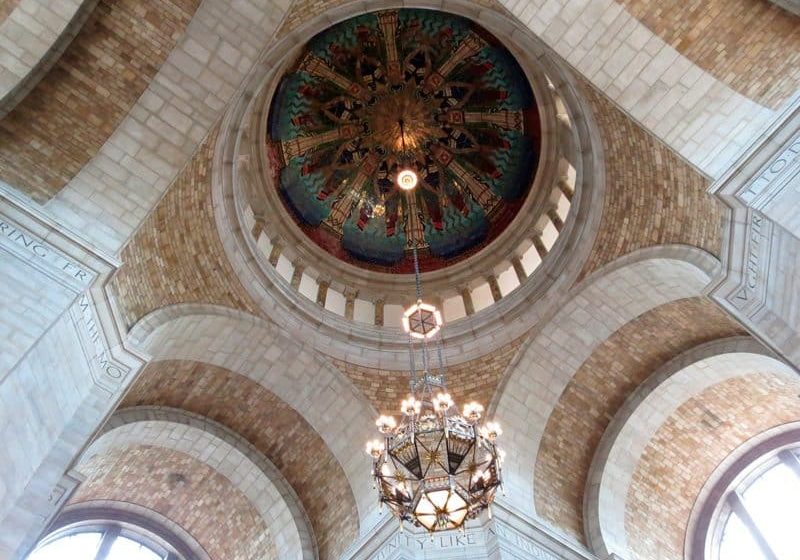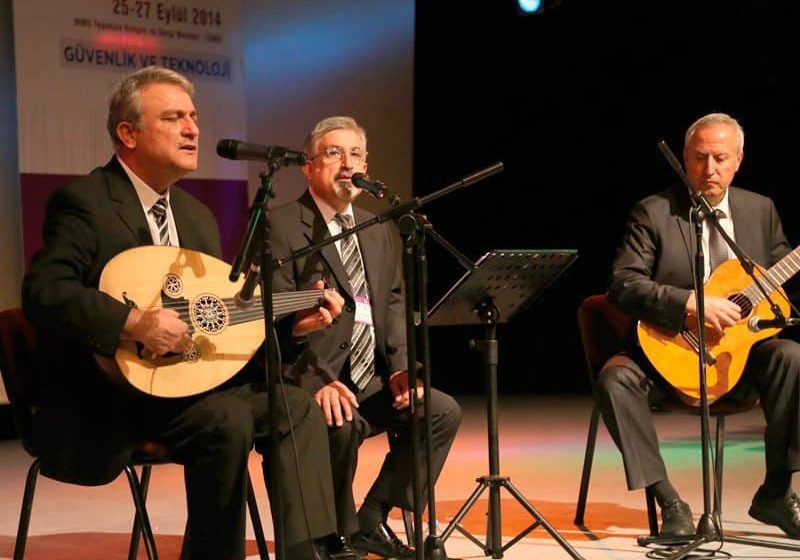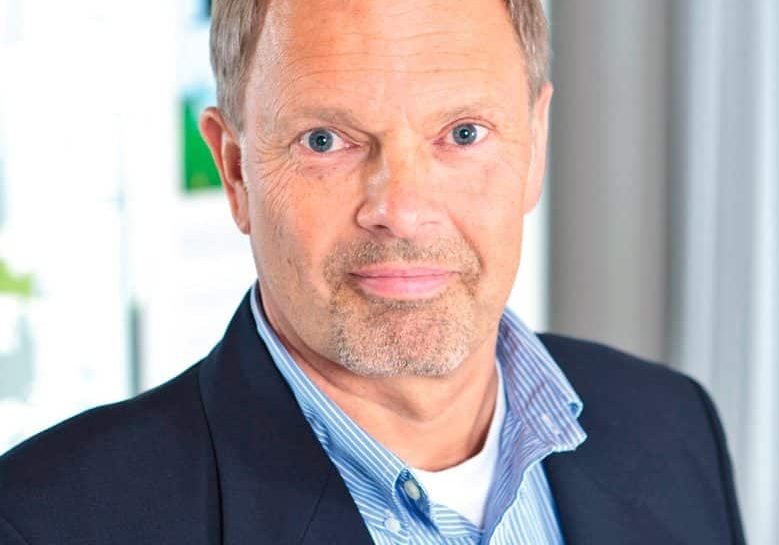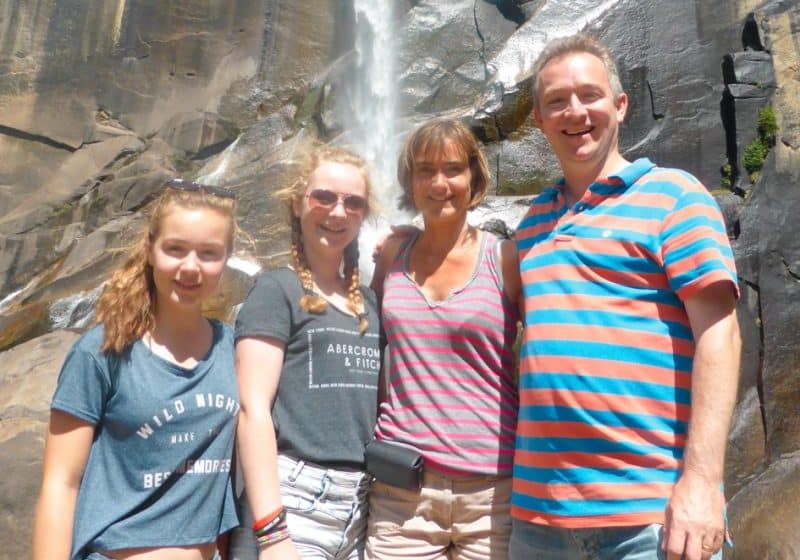Fourth Symposium on Lift & Escalator Technologies
Dec 1, 2014

Continued cooperation between CIBSE Lifts Group, UoN make for another highly successful event.
Take 106 delegates from all sectors of the industry, combine them with a superb conference hotel and 23 speakers, and you get yet another brilliant, annual Lift & Escalator Symposium, organized jointly by the Chartered Institution of Building Services Engineers (CIBSE) Lifts Group and the University of Northampton (UoN) at the Highgate House on September 25-26 in Northampton, U.K.
The 2014 event was the fourth year this highly successful symposium has been presented and bodes well for the already-booked 2015 event. Delegates from as far afield as the U.S., Germany, Singapore, the Netherlands, Spain, Italy, Malaysia, Switzerland, Finland, China, Malta, the U.A.E. and Australia topped off an extensive contingent from the U.K.
John Sinclair, dean of the School of Science and Technology at UoN,
opened the event by expressing delight that the CIBSE/UoN partnership continues to work together to bring
about an internationally recognized
event.
The Sessions
The first session, on control systems, was chaired by Adam Scott, past chairman of the CIBSE Lifts Group. Dr. Lutfi Al-Sharif opened with a fascinating presentation about an algorithm for assessing the effectiveness of up-peak control algorithms. He was followed by Stefan Gerstenmeyer, who delivered a paper about reverse journeys and destination control. Debate as to whether reverse journeys are permissible, as they go against the rules of a previously published paper, followed. A reverse journey is similar to sharing a taxi home with someone and going out of one’s way to drop someone off. The problem is how we convey the reason for a reverse journey to a passenger who may be confused by the concept. With the previous taxi analogy, a passenger would likely know what is going on (even after a few beers) and, therefore, believe it is acceptable. The session was closed by Len Halsey, who spoke about hybrid lift control systems. Again, much debate ensued as to the effectiveness of combining hall-call destination with traditional, full collective designs.
The delegates retired for coffee before the second session, chaired by Dr. Rory Smith. This session focused on energy and the environment. Four papers were presented. The first, by Rafal Kwiatkowski, was entitled “The Development of a Low- to Mid-Rise Energy Efficient Green Lift System.” Audience members asked questions about the possibility of a lift design with a variable-mass counterweight and how this could be achieved. Dr. Ana-Maria Lorente Lafuente followed with a paper entitled “Environmental Impact of Lifts,” which covered the carbon footprint of a lift and how power drawn during use is just one component of its impact, as well as other important factors, such as transport and manufacture. Dr. Ingo Pletschen followed with a paper about comparing the energy consumption of elevators with different drive technologies. The session was completed by Joerg Mueller, who presented the paper “Lift Systems in High-Rise Buildings: Handling Capacity and Energy Efficiency” before the gathering retired for lunch.
A Fascinating Trip through Elevator History
After lunch, the delegates returned to a session about the history of our industry, chaired by Nick Mellor. The opening paper was presented by Dr. Lee Gray, who took the audience through books published about lifts from 1890 to 1940. The books included American and European publications, and highlighted some flagrant plagiarism before more modern referencing rules came into force. The next speaker, your author, looked at the four remaining water-balance lifts in the U.K., including one, surprisingly, installed in 1992. Dr. Gina Barney followed with a paper about the history of traffic control and took us through control systems, from fully automatic push-button types to the current vogue of hall-call allocation (destination-control) systems.
A coffee break gave delegates the opportunity to discuss the papers before returning for the fourth and final session of the day, which was chaired by your author. Standards and guidelines was the topic, and the first paper was presented by Scott, who looked at the 2014 British Council for Offices’ new specification guide, which contains a section on vertical transportation. Scott was followed by Laura Smith, an environmental health officer who has been researching the implications of Lift Operations & Lifting Equipment Regulations (LOLER) in care homes. As suspected, the sector does not have a full understanding of LOLER, which is of great concern, especially as the Health and Safety Executive has issued guidelines specifically for care homes. The closing paper of the day was presented by Nick Mellor, who looked at EN 81-50 and the calculations needed to support EN 81-20. Fortunately, the paper wasn’t heavily formula-based and provided good insight about the impending introduction of parts 20 and 50, which will, of course, affect all European industry people.
The discussion continued in the hotel bar afterward, then into the evening at the gala dinner. Coffee was served before the start of the second day, which I suspect was very much welcomed by some of the delegates – the coffee, that is!
“Legalized Vandalism” Resonates with Delegates
The first session of the day was chaired by Professor Stefan Kaczmarczyk and focused on engineering and design. The first paper, by Roger Howkins, looked at the lost art of modernization and what he described as “legalized vandalism” of some older lifts. This paper seemed to resonate with the delegates, and a number of questions followed before Howkins handed over to Michael Bottomley, who gave a paper on the modernization of a paternoster. Unfortunately, this is a task most of us will never have a chance to handle, due to the world’s limited number of paternosters. Giuseppe De Francesco then presented a paper about the importance of selecting the right door for different applications. He gave us the incredible statistic that some doors in high-rise applications have 900,000 cycles per annum.
Coffee again! No overrunning of the coffee break was allowed, as Barney chaired the next session on traffic design. Four very interesting papers followed, with Al-Sharif presenting his second paper, this time on the modeling of elevator traffic systems using queuing theory. Lutfi was followed by Juha-Matti Kuusinen, who spoke about the effect of randomization on constraint-based estimation of elevator trip origin with destination matrices showing how to map passenger routes. Dr. Rory Smith then presented a paper on buildings in the Middle East that have too few elevators. A very interesting paper demonstrated how buildings are starting to suffer due to the specification of the number of lifts being inadequate, with that not being noticed until the building is occupied. The final paper of the morning was presented by Janne Sorsa. It looked at a very controversial subject, namely, human body size in lift traffic design. This paper expanded on the work of Dr. Fruin in the 1980s and continues to be a topic of conversation in the industry.
Experts Wrap Up, Reflect on Another Successful Event
The final session was chaired by Dr. Richard Peters. It looked at simulation. Dr. Thomas Kuczera presented a paper on the calculation of stress distribution in big rope sheaves and used a very large boat lift as the demonstration focus. Kaczmarczyk followed with a paper on vibration in lift car assemblies and how they can be simulated, thus assisting in the design of an active tuned mass damper to overcome the problem. The final paper of the symposium was entitled “Modeling and Simulation of a Non Stationary High Rise Elevator System” to predict the dynamic interactions between components. The paper, presented by Rafael Sanchez Crespo, brought the presentations to an end for another year.
The symposium was closed by Dr. Jonathan Adams from the UoN and Peters from the Organizing Committee. Kaczmarczyk, Chair of the Postgraduate Field of Lift Engineering, Department of Engineering and Technology, UoN, commented:
“The importance of technical issues discussed during the conference proceedings cannot be overestimated. The symposium has become a leading international forum, which stimulates impactful research and drives enterprise and innovation in lift and escalator technology.”
Peters, of the CIBSE Lifts Group and visiting professor in Lift Modeling and Simulation at the UoN, commented:
“The range and quality of papers submitted for this year’s symposium demonstrates the breadth of lift and escalator technology research currently being undertaken. The popularity of this annual event has far exceeded our expectations, and we are delighted to be hosting this international forum on behalf of a major industry sector.”
If you are interested in obtaining papers from the four years of the symposium, or if you are interested in submitting abstracts for next year’s symposium on September 24-24, visit website: www.liftsymposium.org. The deadline to submit abstracts is April 2015.
Get more of Elevator World. Sign up for our free e-newsletter.

